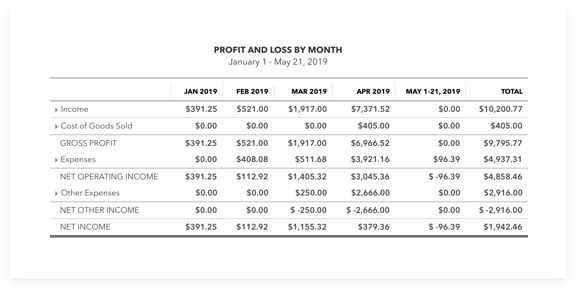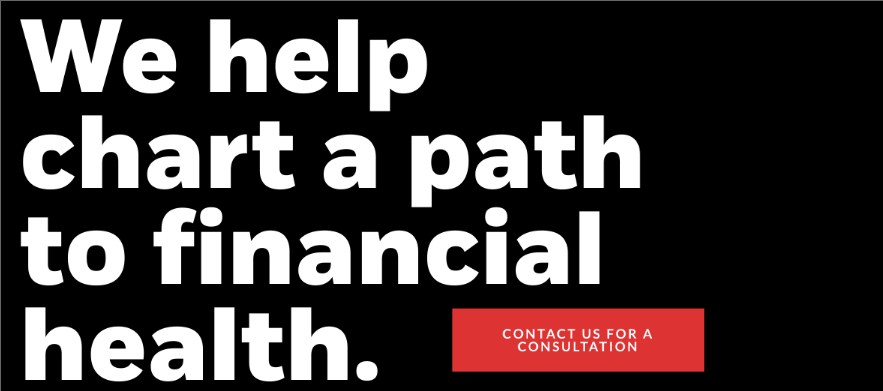Understanding Gross and Net Profit Margins – formulas, definitions and how to calculate them
Business is carried out to hopefully earn a profit. It works as an incentive to the entrepreneur, for the risk taken and resources spent, during the financial year.
Doesn’t matter whether you are a startup, a small business, or a larger corporation, it is important to have a solid understanding of key performance metrics such as sales, expenses, cash flow, and profit margins. Achieving and understanding profit should be easy, but one look at your profit and loss statement (P&L) can leave you a little confused if you are not an accountant or finance manager. And if you don’t know how to calculate gross profit, you will, understandably, be even more lost. What is a profit margin? Profit margins are a ratio calculation of a businesses’ profit (sales minus all expenses) divided by its revenue.
 An article on the topic in The Balance, states “the profit margin ratio compares profit to sales and tells you how well the company is handling its finances overall. It’s always expressed as a percentage.” Profit margin is important to understand because it goes to the heart of whether your business is doing well financially. And in certain industries such as restaurants or hospitality, the margins can be tight.
An article on the topic in The Balance, states “the profit margin ratio compares profit to sales and tells you how well the company is handling its finances overall. It’s always expressed as a percentage.” Profit margin is important to understand because it goes to the heart of whether your business is doing well financially. And in certain industries such as restaurants or hospitality, the margins can be tight.
Now few different types of profit margin formulas can be useful when evaluating a company’s financial performance. The 3 most common are:
- Gross profit margin
- Net profit margin
- Operating profit margin.
The net profit margin will allow you to figure out how much profit can be made from total sales, and the operating profit margin shows the earnings from operating activities, whereas the gross profit margin is the profit that remains after you account for the costs of services and goods sold. If you are in a retail or eCommerce business that sells products, it’s important to analyze your sales and determine what products are your top profit performers and how they relate to your business results, what product category generates the most revenue, and what opportunities exist for growth in that area.
Many business owners dive straight to the bottom of their P&L, where net profit, or the bottom line, lies. With this treasure already in hand, it’s tempting to ignore operating and gross profit. For this reason, a lot of small business owners have a good understanding of the sales and the net profit of their P&L, but they miss all of the information in between.
When it comes to managing your business finances, understanding your profit margin is a crucial component. While it seems logical, there are many things small business owners either don’t know or forget about profit margins—including what their margin goals should be, to begin with. Investopedia has a pretty comprehensive article on the subject of gross margins.
Key Takeaways to Understand
- Gross profit refers to a company’s profits earned after subtracting the costs of producing and distributing its products.
- Gross profit assesses a company’s ability to earn a profit while simultaneously managing its production and labor costs.
- Net income indicates a company’s profit after all of its expenses has been deducted from revenues.
- Net income is an all-inclusive metric for profitability and provides insight into how well the management team runs all aspects of the business.
- Net income is often referred to as the “bottom line” due to its positioning at the bottom of the income statement.
This article will cover what profit margin is, as well as explain how to use the different profit margin formulas to calculate these numbers for your business.
How to Calculate Profit Margin
The profit margin formula simply takes the formula for profit and divides it by the revenue. The profit margin formula is:
((Sales – Total Expenses) ÷ Revenue) x 100
Gross Profit Margin Formula
The gross profit margin equation is typically used to determine the profit margin of a single product or service, not of an organization as a whole. To determine the gross profit margin, a business looks at the retail price of their product and subtracts the cost of materials and labor used to produce it. You’ll then divide that by the retail price. A useful article by Fundera gives an example, “if you sell a product for $25, and it costs $20 to make, the gross profit margin is 20% ($5 divided by $25).” This margin compares revenue to variable costs. It tells you how much profit each product creates without fixed costs. Variable costs are any costs incurred during a process that can vary with production rates (output).
The Balance article explains that professional service businesses such as law firms, use the cost of revenue (the total cost to achieve a sale) instead of the cost of goods sold (COGS).
Determine the gross profit by:
Revenue – (Direct materials + Direct labor + Factory overhead)
And net sales using:
Revenue – Cost of Sales Returns, Allowances, and Discounts
The gross profit margin formula is then:
(Gross Profits ÷ Net Sales) x 100
Operating Profit Margin Formula
The operating profit margin alludes to the profit obtained after deducting the cost of production and operating expenses from the net sales. It helps to gauge the overall operating effectiveness and performance of the company. For example, Forbes published an article about Trump’s businesses and explained “Golf clubs and resorts are expensive to manage, with operating profit margins running at 20% in good times.”
This margin includes both costs of goods sold, costs associated with selling and administration, and overhead. The COGS formula is the same across most industries, but what is included in each of the elements can vary for each. The formula is:
Beginning inventory + Purchases – Ending Inventory
You then add together all of your selling and administrative expenses and use them with the COGS and revenues in the following formula:14
((Revenues + COGS – Selling and Administrative Expenses) ÷ Revenues) x 100
Net Profit Margin Formula
This is often the equation used to determine an entire organization’s profit margin: Net profit margin is calculated by taking the company’s net income for a given period and dividing it by net sales. Some people refer to net income as net earnings, net profit, or the company’s bottom line (nicknamed from its location at the bottom of the income statement). It’s the amount of money you have left over to pay shareholders, invest in new projects or equipment, pay off debts, or save for future use. For example, let’s say your company generates $200,000 in net income and net sales of $600,000. Dividing those two numbers and multiplying by 100 gives you a profit margin of 33%.
The net profit margin ratio is the percentage of a business’s revenue left after deducting all expenses from total sales, divided by net revenue. Net profit is total revenue minus all expenses:
Total Revenue – (COGS + Depreciation and Amortization + Interest Expenses + Taxes + Other Expenses)
You then use net profit in the equation:
Net Profit ÷ Total Revenue x 100
This gives you the net profit margin for the company. The net profit takes all business expenses into account, not just the cost of goods. Your net profit margin helps you determine how efficient your business is at converting profits from sales, while your gross profit margin helps you figure out the profitability of a specific product or service.
Some analysts feel that this ratio is not a good benchmarking comparison tool across different industries, because of the different financial structures and costs different industries use.
Why knowing your Profit Margins Matter for a Business Owner
 (image credit: CNBC)
(image credit: CNBC)
Although there are slight variations on the definition, a profit margin typically represents the percent of revenue earned after all costs, business taxes, depreciation, interests, and other expenses have been deducted.
These are some reasons you should track your profit margins:
- It helps you grow your business: Figuring out your margins can help you determine excess spending or underperforming products and practices for your business. It’s helpful data to have on hand when evaluating how your business moves forward as it grows and expands.
- It helps you flag and resolves issues: Staying in tune with your margins can help you identify issues you might be having running your business. For instance, if your profit margin is low, you might be having some pricing errors, expense management problems, or accounting issues.
- It’s required for financing: You might have a very compelling product, idea, or service that your business offers, but lenders are going to want to know where your margins stand before offering you a small business loan. Even if you’re already making millions, if lenders don’t know whether you’re profitable, it’s more difficult to secure financing.
- It’s important when seeking funding capital from investors: In an article by Funding sage, mentions that on an episode of CNBC’s show Shark Tank, illustrates the importance of knowing the difference between gross profit margin and net profit margin when assessing an investment in a startup.
Once you have your profit margin, you can see how many revenue dollars are actually going to your bottom line, as opposed to covering your business expenses. This valuable metric can also reveal whether you’ve priced your product too high or too low.
Remember the differences this way:
- Gross profit margin — how efficiently is the product being produced?
- Net profit margin — how efficiently is the company operating as a whole?
How do Profit Margins Affect the Economy and Wall Street?
The profit margin is critical to a free-market economy driven by capitalism. The margin must be high enough when compared with similar businesses to attract investors. Profit margins, in a way, help determine the supply for a market economy. If a product or service doesn’t create a profit, companies will not supply it.
Profit margins are a large reason why companies outsource jobs because U.S. workers are more expensive than workers in other countries. Companies want to sell their products at competitive prices and maintain reasonable margins. To keep sales prices low, they must move jobs to lower-cost workers in Mexico, China, or other foreign countries.
These profit margins may also assist companies in creating pricing strategies for products or services. Companies base their prices on the costs to produce their products and the amount of profit they are trying to turn.
For example, retail stores want to have a 50% gross margin to cover costs of distribution plus return on investment. That margin is called the keystone price markup. Each entity involved in the process of getting a product to the shelves doubles the price, leading retailers to the 50% gross margin to cover expenses.
Conclusion
It’s important to remember that to get an accurate look at what your small business’s profit margin is, you need to look at all the details. Keep track of everything: from expenses like payroll, utilities, and shipping to every source of revenue, including the small stuff like transaction fees or maintenance contracts. This gives you a very clear picture of your company’s margins, so you have to be extra careful not to miscalculate or leave anything off the books. A great online tool to help you determine your margins is OmniCalculator. The numbers that you need to calculate your profit margin will also show up on your latest profit and loss statement. If your small business or startup needs help preparing or analyzing your financial statements, feel free to contact Huckabee CPA for any questions or a free consultation.










